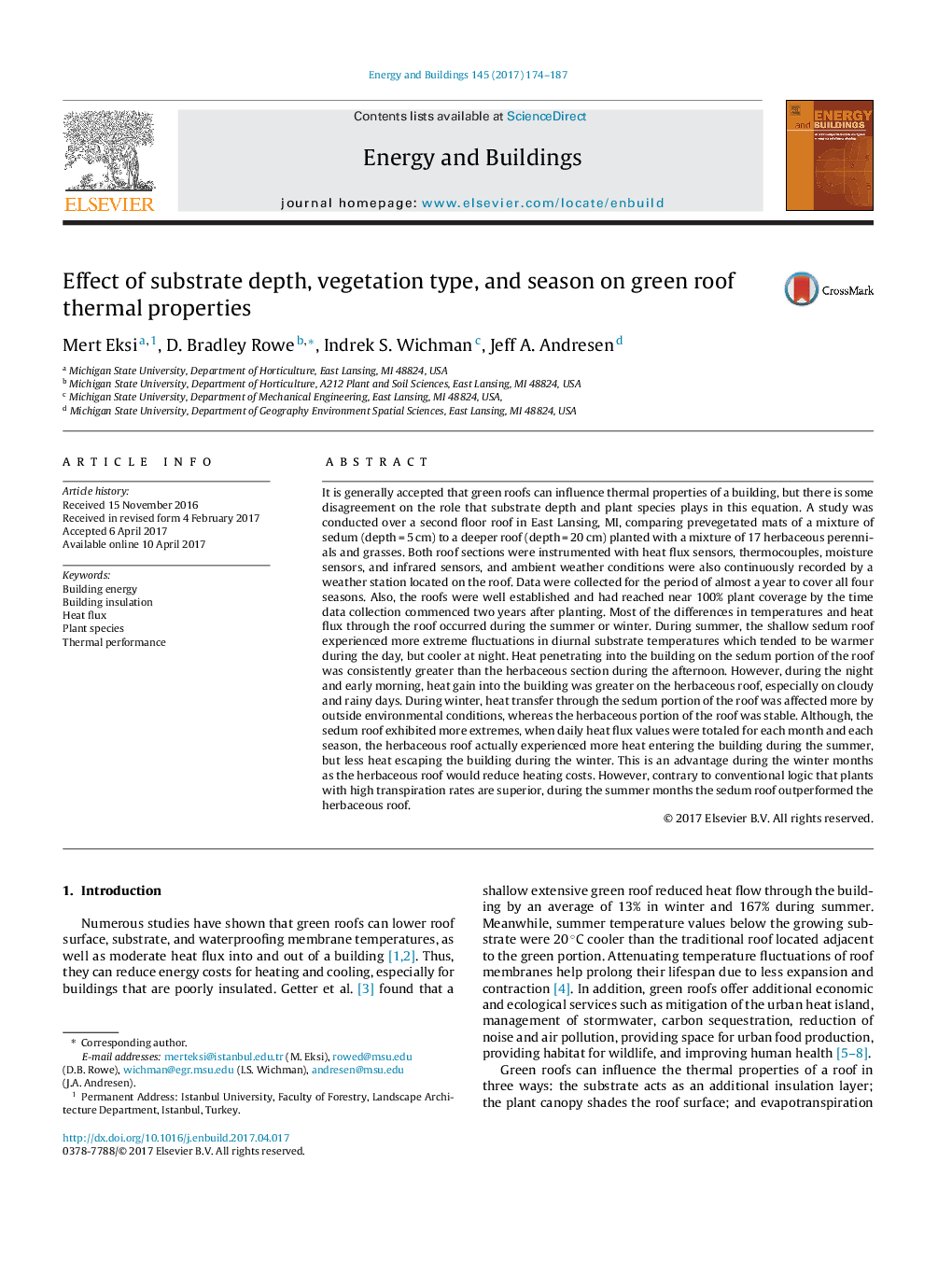| Article ID | Journal | Published Year | Pages | File Type |
|---|---|---|---|---|
| 4914167 | Energy and Buildings | 2017 | 14 Pages |
Abstract
It is generally accepted that green roofs can influence thermal properties of a building, but there is some disagreement on the role that substrate depth and plant species plays in this equation. A study was conducted over a second floor roof in East Lansing, MI, comparing prevegetated mats of a mixture of sedum (depth = 5 cm) to a deeper roof (depth = 20 cm) planted with a mixture of 17 herbaceous perennials and grasses. Both roof sections were instrumented with heat flux sensors, thermocouples, moisture sensors, and infrared sensors, and ambient weather conditions were also continuously recorded by a weather station located on the roof. Data were collected for the period of almost a year to cover all four seasons. Also, the roofs were well established and had reached near 100% plant coverage by the time data collection commenced two years after planting. Most of the differences in temperatures and heat flux through the roof occurred during the summer or winter. During summer, the shallow sedum roof experienced more extreme fluctuations in diurnal substrate temperatures which tended to be warmer during the day, but cooler at night. Heat penetrating into the building on the sedum portion of the roof was consistently greater than the herbaceous section during the afternoon. However, during the night and early morning, heat gain into the building was greater on the herbaceous roof, especially on cloudy and rainy days. During winter, heat transfer through the sedum portion of the roof was affected more by outside environmental conditions, whereas the herbaceous portion of the roof was stable. Although, the sedum roof exhibited more extremes, when daily heat flux values were totaled for each month and each season, the herbaceous roof actually experienced more heat entering the building during the summer, but less heat escaping the building during the winter. This is an advantage during the winter months as the herbaceous roof would reduce heating costs. However, contrary to conventional logic that plants with high transpiration rates are superior, during the summer months the sedum roof outperformed the herbaceous roof.
Related Topics
Physical Sciences and Engineering
Energy
Renewable Energy, Sustainability and the Environment
Authors
Mert Eksi, D. Bradley Rowe, Indrek S. Wichman, Jeff A. Andresen,
